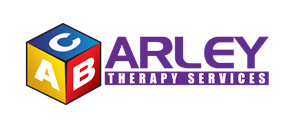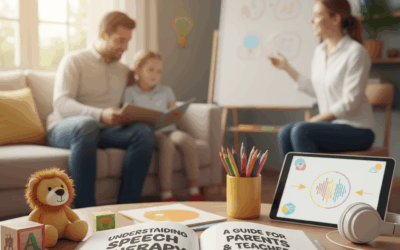Building the Foundations of Reading: How Letter-Sound Knowledge Unlocks Literacy
Introduction: Why Speech and Sound Come Before Reading
Before a child ever picks up a book, they are already learning to read: through their ears and mouths.
Long before letters make sense on a page, children’s brains are busy building connections: between the sounds they hear, the words they speak, and eventually, the symbols they’ll see in print.
Speech-language pathologists (SLPs) understand this process deeply. Reading is not a natural skill. Unlike talking, which develops organically, reading must be explicitly taught. It relies on children’s ability to connect spoken sounds (phonemes) to written symbols (graphemes), a skill called letter-sound correspondence.
This foundational understanding bridges two worlds: speech and literacy. When teachers and parents work together to nurture these sound-symbol links through systematic phonics instruction, they give children the key to unlocking every word they’ll ever read.
Step 1: Laying the Groundwork with Phonological Awareness
Before we talk about letters, we must talk about sounds.
Phonological awareness is the ability to hear and manipulate sounds in spoken language without any letters involved.
Children develop this skill in stages:
- Rhyming and rhythm – noticing that cat and hat sound alike.
- Syllable awareness – clapping out ti-ger or el-e-phant.
- Initial and final sounds – recognizing that bat and ball start with the same sound.
- Phonemic awareness – isolating and blending individual sounds, such as hearing /s/, /u/, /n/ and blending them into sun.
SLPs often call this “ear training.” Children are learning to tune in to the sound structure of language. Only after they can identify and manipulate sounds by ear should we attach those sounds to letters.
At home, this can look like singing nursery rhymes, playing “I Spy” with sounds (“I spy something that starts with /b/”), or stretching out words like m-a-n to help a child blend them. In classrooms, teachers can weave these skills into circle time, music, and daily read-alouds.
Step 2: Introducing Letter-Sound Correspondence
Once children can hear and play with sounds, we begin to teach that letters represent those sounds.
Letter-sound correspondence means understanding that each letter (or letter group) stands for a specific sound.
For example:
- m makes /m/, as in moon.
- s makes /s/, as in sun.
- t makes /t/, as in top.
This is not just memorization, it’s about mapping sounds to symbols so that children can decode new words independently. When children know that b-a-t represents three sounds that blend into bat, they begin reading with confidence.
Research consistently shows that early, systematic phonics instruction (where letter-sound relationships are taught in a planned, explicit sequence) leads to better reading and spelling outcomes. SLPs and educators alike emphasize consistency, repetition, and multi-sensory learning as key ingredients for success.
Step 3: Teaching Phonics Systematically and Playfully
Phonics instruction builds on letter-sound knowledge to teach how letters work together to form words. Children learn to blend, segment, and manipulate sounds using patterns.
For example:
- Once a child knows m, a, t, they can read mat, am, at.
- Adding s opens up sat, sam, mats.
- Later, they’ll learn that two letters can make one sound (sh, ch, th).
A systematic approach introduces these in a logical order, starting with simple, continuous sounds (like /m/, /s/, /a/) before more complex ones (like /th/ or /r/).
A playful approach makes this learning stick. Use letter tiles, sand trays, songs, and silly sentences. Let children move, draw, sing, and feel the sounds as they connect to letters — engaging the brain through multiple senses.
Step 4: Practical Tips for Teachers and Parents
Here are seven actionable strategies you can start using today to strengthen children’s letter-sound and phonics skills:
1. Start with Sounds, Not Letters
Spend time helping children listen for and identify sounds before showing them the written letter.
How: Play “What’s the first sound?” games or stretch out words like ssssun to emphasize the initial sound.
2. Teach One Sound at a Time
Avoid overwhelming children with the entire alphabet. Introduce 1–2 new letters per week, reviewing frequently.
How: Create a “sound of the week” wall or use small picture cards (e.g., apple for /a/).
3. Pair Visuals with Movement
When children move, they remember.
How: For /m/, rub your tummy and hum “mmmm” like you’re eating something tasty. For /t/, pretend to tap a drum. Link the movement to the sound every time.
4. Use Multi-Sensory Practice
Children learn best through seeing, hearing, and doing.
How: Write letters in sand or shaving cream, trace them in the air, or build them with playdough. Say the sound as you form the letter.
5. Blend and Segment Daily
Blending (putting sounds together) and segmenting (breaking words apart) are the backbone of decoding.
How: Use magnetic letters to build simple words like cat and dog. Say each sound slowly (/c/…/a/…/t/), then faster to blend. Reverse the process to segment.
6. Read Aloud with Emphasis on Sounds
Model how printed words connect to spoken ones.
How: Point to words as you read and occasionally stretch or emphasize sounds: “Look, b-u-g — bug!”
7. Keep It Joyful and Low-Pressure
Children thrive when learning feels like play, not testing.
How: Celebrate effort, not perfection. Use games like “Sound Bingo” or “Mystery Word” to make practice fun.
Encouragement: Reading Is a Journey, Not a Race
Every child’s path to reading looks different. Some will pick up letter-sound connections quickly; others need more time and repetition. Both are normal.
The key is steady, supportive practice. Not speed.
Teachers and parents share a powerful role: to make reading a joyful discovery, not a daily struggle. By focusing on sounds first, teaching letter-sound relationships clearly, and practicing them playfully, we give children not only the tools to decode, but also the confidence to explore the limitless world that words can open.

